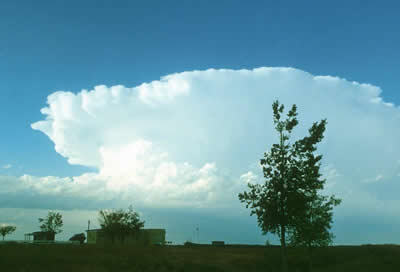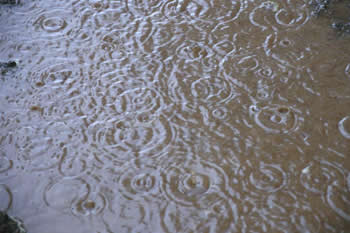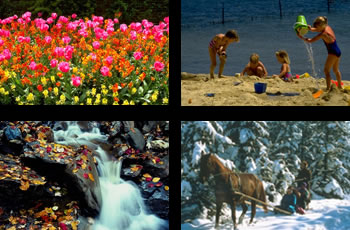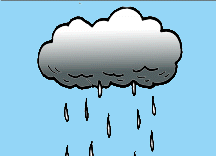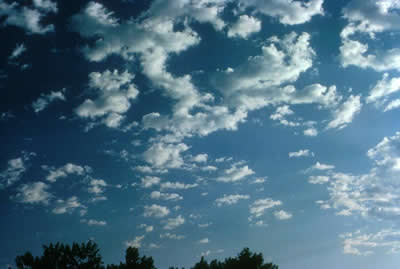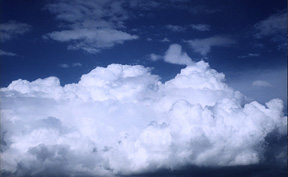
Courtesy of Steve Albers
Related links:
Watch the Sky
Ever looked up in the sky on a lazy Sunday afternoon and just watched the clouds? Well, here's a project where you can do just that and learn something too! This project works best if you do it with a group...either with your classmates, friends, brothers and sisters, or parents. You will need a pad of paper and pencils or crayons. You can also use a camera if you have one (200 speed film recommended). If you own a pair of binoculars, bring those along too.
First, read about different types of clouds in the Earth's Atmosphere section of the Windows to the Universe website. Then, every day, for the next 3 weeks, go out into an open area where you can see a lot of sky. (DO NOT work on this project if the weather is bad or if you hear or see thunder and lightning. Safety is more important.) Look at the sky in all directions. If you see a cloud, draw a picture or take a photo of it.
Determine what kind of cloud it is and what cloud group it belongs to. How much sky is covered by clouds? Does it look like it's going to rain or snow? Is it foggy? How high up are the clouds? What color are the clouds? Is it windy? How hot or cold is it? What time is it? Write all of this down on your pad of paper. Also write down what the weather was like for that whole day. For fun, see if the cloud looks like someone or something (a cat or your teacher, for example).
Do this every day for the next three weeks. At the end of three weeks, meet with your classmates, friends, brothers and sisters, or parents. Go over all of the photos, drawings, and data that you collected and discuss them with your group. Try to answer the following questions:
If you are doing this with your class, ask your teacher to hang up your photos or drawings. Hang them up according to cloud group. Throughout the rest of the school year, take a look out a classroom window once a day and figure out what type of clouds there are in the sky.






